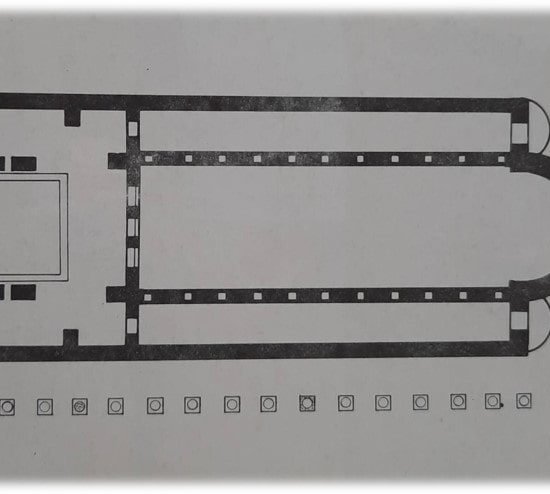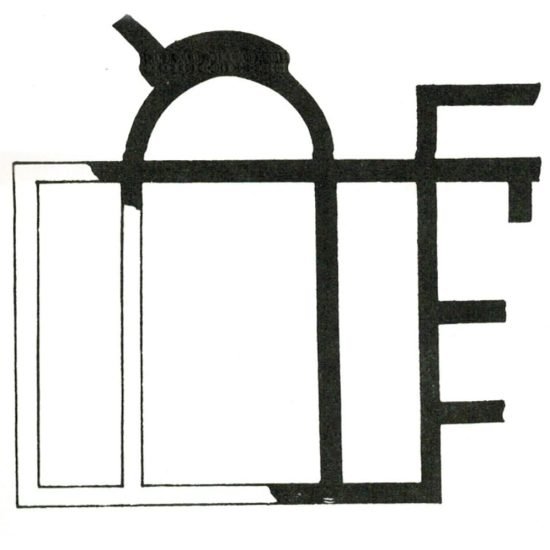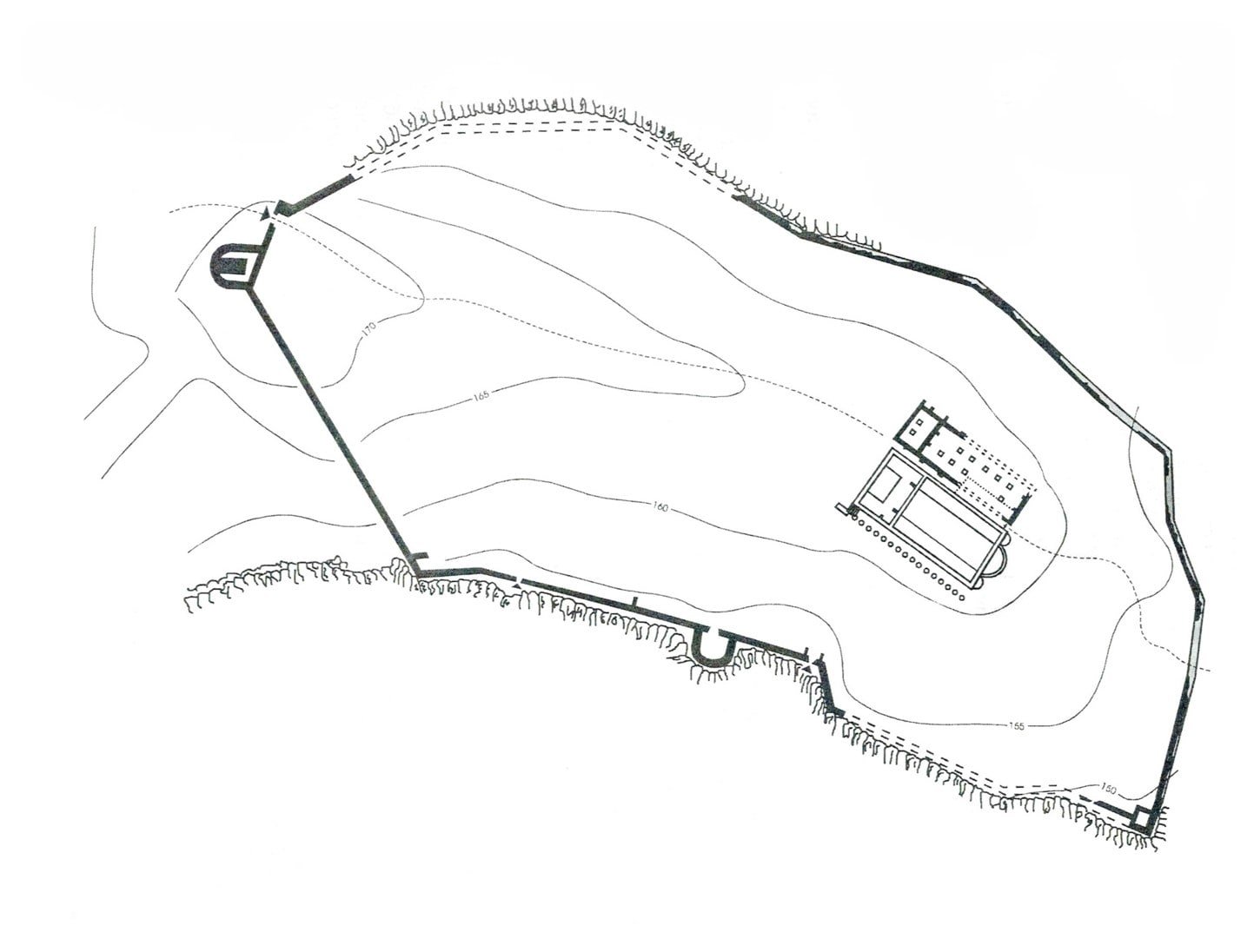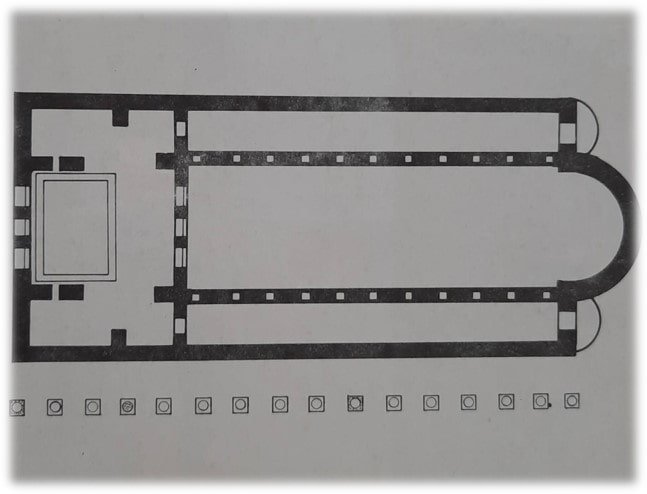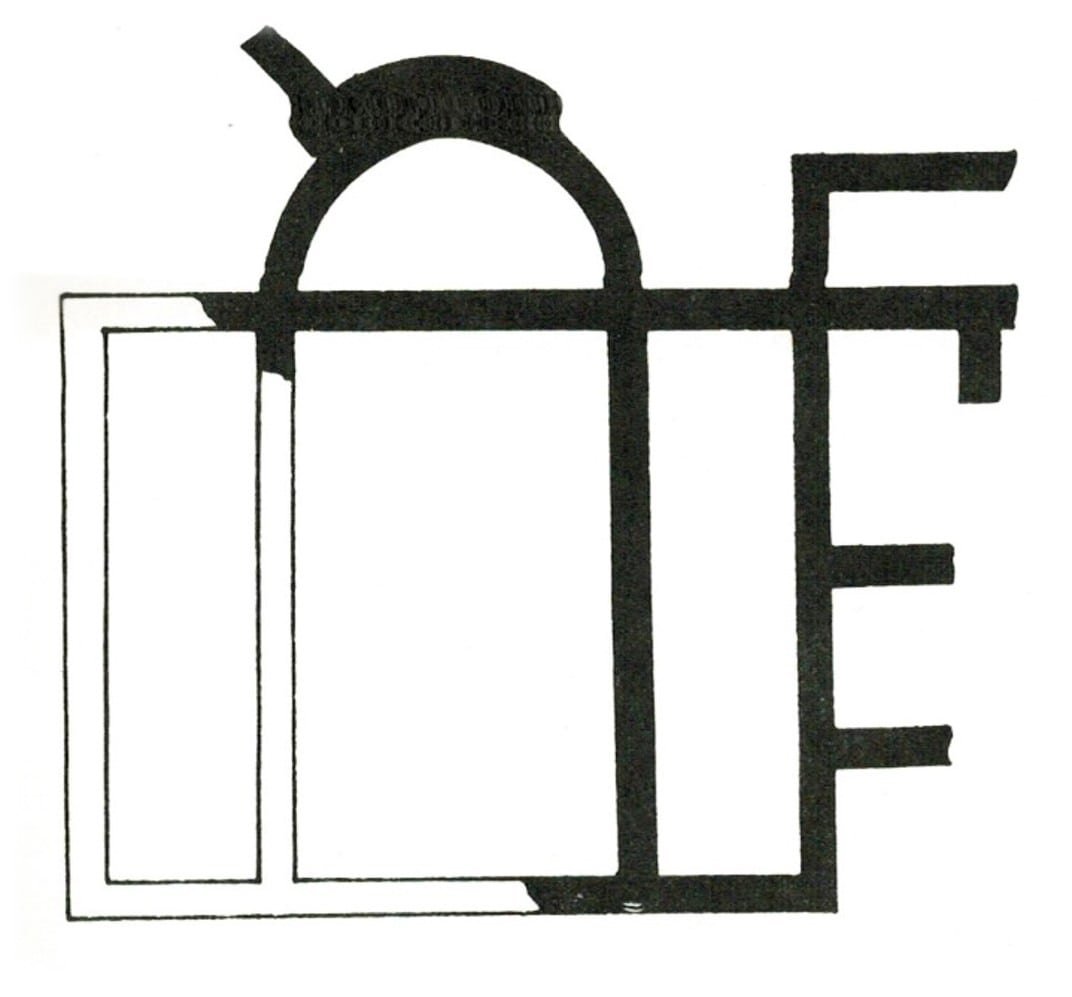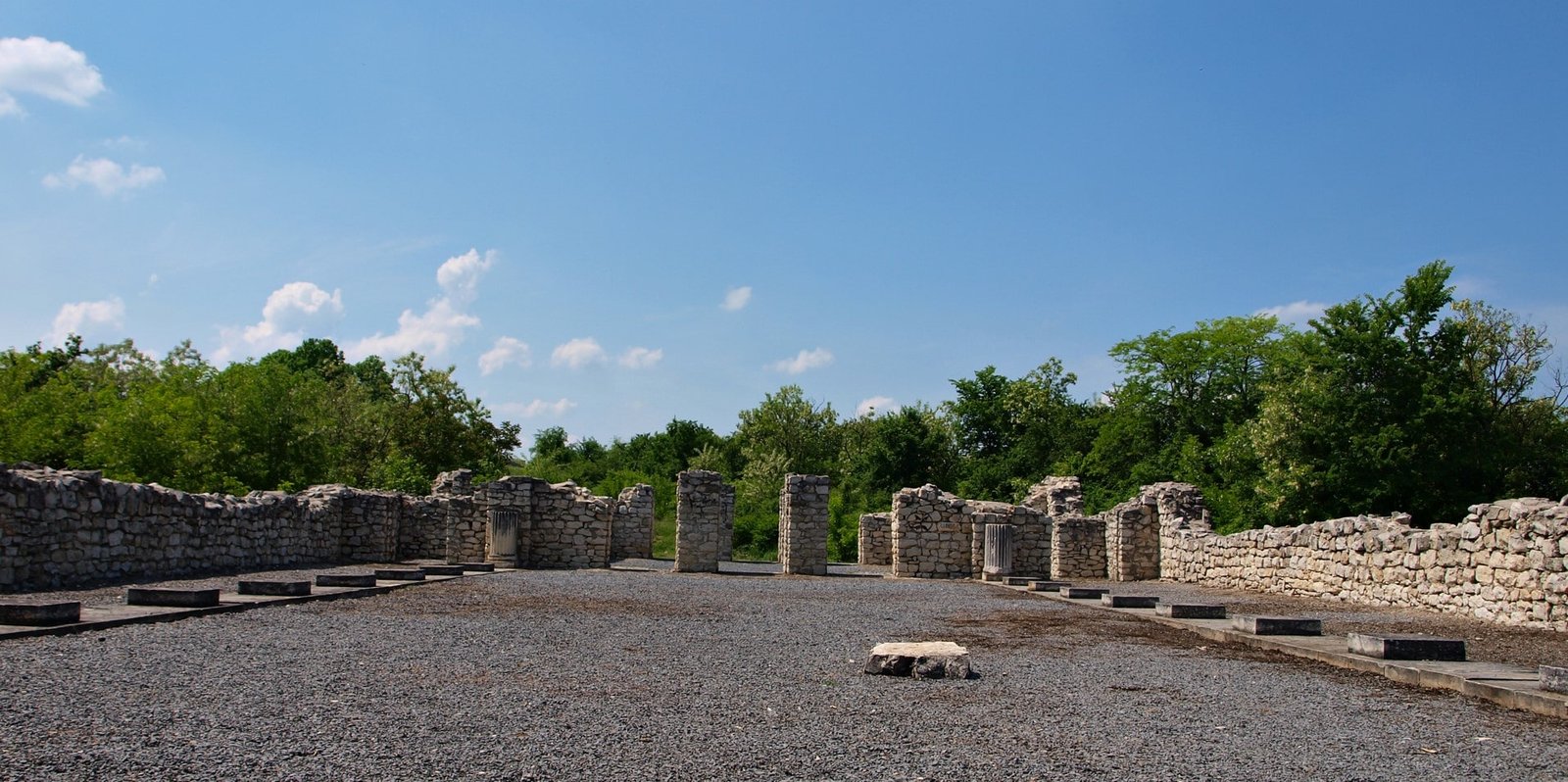Storgosia
per person
The area of Pleven is saturated with archaeological sites, but only a small part of them has been studied. Among them, the longest-explored is the fortress located in the Park of Kaylaka, about 3 km southeast of Pleven, known as Storgosia. Although still poorly explored, according to artefacts and pottery sporadically found, analysis of written sources, as well as settlements within the Pleven wider area suggest the presence of Goths in the Late Antiquity. The fortresses near the village of Sadovets, not far from the town, are also related to them.
The basilica with mosaics and inscriptions discovered at the foot of Storgosia Fortress (now covered), together with the church outside the fortress of Golemanovo Kale, Sadovets, as well as several other churches from the second half of the 4th – 6th centuries raised the question of the peculiarities of the Gothic churches in today’s Bulgaria, influenced by Arianism. The question has not yet been resolved in detail, it provokes discussions and the solution needs more empirical material.
FORMAL ANALYSIS
During the early archaeological excavations in 1909, a badly ruined basilica was discovered further studied in the 1960s. The building has been preserved almost entirely at the level of its foundations, and part of its reconstruction is grounded on the assumptions of the researchers.
The basilica is a monumental edifice (45.25 x 22.20 m) – one of the largest discovered so far in Bulgaria. Two building stages have been registered. It was originally three-nave with one semicircular apse, with a single-parted narthex from the west and a portico with a colonnade in the Roman-Corinthian order. In height, its stone walls had brick belts. The central nave was covered with a saddleback tiled roof, and the side aisles – with a pent roof each. In plan, the basilica belongs to the Hellenistic type of Early Christian temples and was constructed in the 4th century.
The basilica was burned down during an invasion of the Huns in the 5th century. with its restoration in the 6th century two apses were added to the side aisles and a complex altar was formed, responding to the changes that occurred in the church service of Early Byzantium. The interior was completed with an openwork marble altar screen and a pulpit. The colonnade had Corinthian capitals, architraves and cornices with floral decoration. The walls were decorated with multicolored mosaics composed of tesserae of smalt, stone and terracotta.
During the archaeological research in 1909, still another Early Christian basilica was discovered at the northern foot of Storgosia Fortress. It has been partially explored because it falls under a road, and its eastern part has been carried away by the nearby Tuchenitsa River. According to its researcher K. Valev, parts of the building were destroyed and rebuilt in different ways, which changed its plan. It had three aisles, but only its southern apse (facing south) with an additional room has been revealed.
The greatest attention during the study of the basilica was given to the mosaic on its floor. It was preserved on an area of about 40 sq. m and was composed of tesserae of marble, limestone and terracotta in red, dark blue, white, and less often gray and green. They were arranged in square panels, in which diagonally arranged circles and squares with different fillings alternate. The squares contained a Solomon’s Knot, a six-pointed star of triangles, a rosette, and intricate braids. The circles featured a Maltese cross, a four-pointed star, a circular figure of four pelts and a circle with a cruciform quatrefoil rosette, cross figures of four heart-shaped ornaments, an X-shaped rosette with inscribed Solomon’s Knot and a scaly pattern in the fields.
A liturgical text in Latin has been preserved after the net of square panels: INTROLIBO AD ALTAREM DEI (AD D)EUM QU (I LAE)T (IFICA)T (JUVENTUTEM MEAM), or translated: I call into the altar of God to Him Who loved my youth. In the westernmost part of the whole composition, arches with inscribed chrysms and the letters A and W were presented. A fragment of another inscription was also discovered: … I ALI VSI VSSAL. Due to incomplete research and the poor condition of the basilica, its dating is based on the mosaic alone. The Latin inscriptions directed its researchers to the 4th – 6th centuries. However, thanks to some of the features of the mosaic, this period can be specified to the first half of the 5th century (V. Popova-Moroz).
The Late Antique Storgosia ceased to exist in the late 6th – early 7th century.
In addition to the Christian churches presented in the region of Pleven, a monastery dedicated to St. George is also known. It is not necessary for the present project to deal with the problems connected with it, but the question of its dating should be mentioned. It certainly functioned in the 16th – 18th centuries, but the date of its construction is not yet clear. According to local legends, it is significantly earlier.
VENKO IVANOV AND KATYA MELAMED
- STORGOSIA © PLAN. VENKO IVANOV
- Plan of the basilica in Storgosia © PLANS. VENKO IVANOV
- Plan of the basilica with mosaic at the foot of the fortress – the revealed southern aisle and apse © PLANS. VENKO IVANOV
- WEST ACCES TO THE BASILICA © PHOT. CC BY-SA 3.0 https://commons.wikimedia.org/wiki/Category:Storgosia#/media/ File:Storgosia_TB_3.jpg
- INTERIOR OF THE BASILICA © PHOT. CC BY-SA 3.0 https://commons.wikimedia.org/wiki/Category:Storgosia#/media /File:Storgosia_TB_10.jpg
Información de la localidad
Storgosia
| Other monuments and places to visit | Regional Historical Museum – Pleven; The Roman town of Oescus with some Early Christian sites |
| Natural Heritage | |
| Historical Recreations | |
| Festivals of Tourist Interest | |
| Fairs | |
| Tourist Office | Yes, in Pleven |
| Specialized Guides | Yes, in the Museum |
| Guided visits | Yes, in the Museum |
| Accommodations | Plenty of |
| Restaurants | Plenty of |
| Craft | |
| Bibliography | |
| Videos | |
| Website | tourpleven@abv.bg visitpleven.com |
| Monument or place to visit | Early Christian basilica and fragments of Storgosia Fortress |
| Style | Late Antiquity |
| Type | Church architecture |
| Epoch | 4th – 6th century |
| State of conservation | Good |
| Degree of legal protection | Regional Historical Museum - Pleven |
| Mailing address | museum@rim-pleven.com |
| Coordinates GPS | |
| Property, dependency | Monument of culture of national significance – Ministry of Culture of Republic of Bulgaria |
| Possibility of visits by the general public or only specialists | General public visits |
| Conservation needs | Not at this stage |
| Visiting hours and conditions | Open air park |
| Ticket amount | Free access |
| Research work in progress | |
| Accessibility | On a hill - medium difficulty |
| Signaling if it is registered on the route | |
| Bibliography | К. Вълев. Разкопки при Плевен. – Известия на българското археологическо дружество, 1, 1910, 203-214. В. Динчев. Римските вили в днешната българска територия. София, 1997. В. Иванов. Проблеми при интерпретацията на манастира „Св. Георги“ край Плевен. – Мизия от древността до наши днес, 3, 2022, 158-167. Т. Ковачева. Сторгозия през късната античност и ранновизантийската епоха. Укрепителна система. Раннохристиянска базилика № 2. – In: Римски и ранновизантийски селища в България, 3, 2008, 102-121. В. Попова-Мороз. Мозайката на ранновизантийската базилика № 1 в Кайлъка. – In: 730 години град Плевен. Плевен, 2002, 86-89. All with summaries in English or French. |
| Videos | |
| Information websites | rim-pleven.com |
| Location | Park Kaylaka – Pleven: about 3 km south of the town centre |




